Northern Virginia is known for its warm, humid summers, and it’s getting muggier as the summer temperatures increase and the dew point rises due to climate change.
But you’re used to this in our transition zone climate.
So is your lawn. In fact, your lawn likes the sun and the heat quite a bit. So when it doesn’t get enough sunshine, it’s not too happy.
Maybe you just moved to a heavily shaded property in Northern Virginia or you’ve struggled with a shady yard for years. Either way, growing grass in the shade can certainly present some challenges for you as you try to maintain a consistently green, healthy lawn.
Sunlight is super important to your lawn’s health. Without enough of it, grass simply won’t thrive. In shade, your lawn has the tendency to grow thin and dull, losing its vibrant green color. It might also become more susceptible to stress. Even your grass roots can suffer as they attempt to grow in the shade.
If you’ve been trying to grow grass under a canopy of trees, it can be incredibly frustrating. You might find yourself, in fact, unsuccessful and seeking a solution. You want to look at the problem with realistic expectations by understanding more about how your lawn grows. You can better comprehend through this knowledge what you can achieve in shady spots.
Let’s talk more about how to grow grass in shade.
Understanding How to Get Grass to Grow in the Shade
I’m sure you understand the value of shade in your yard. It offers a nice refuge from the bright, hot sun in summer. When you’re hanging out with your family and friends on your patio, the shade is a great place for chilling out and enjoying time together.
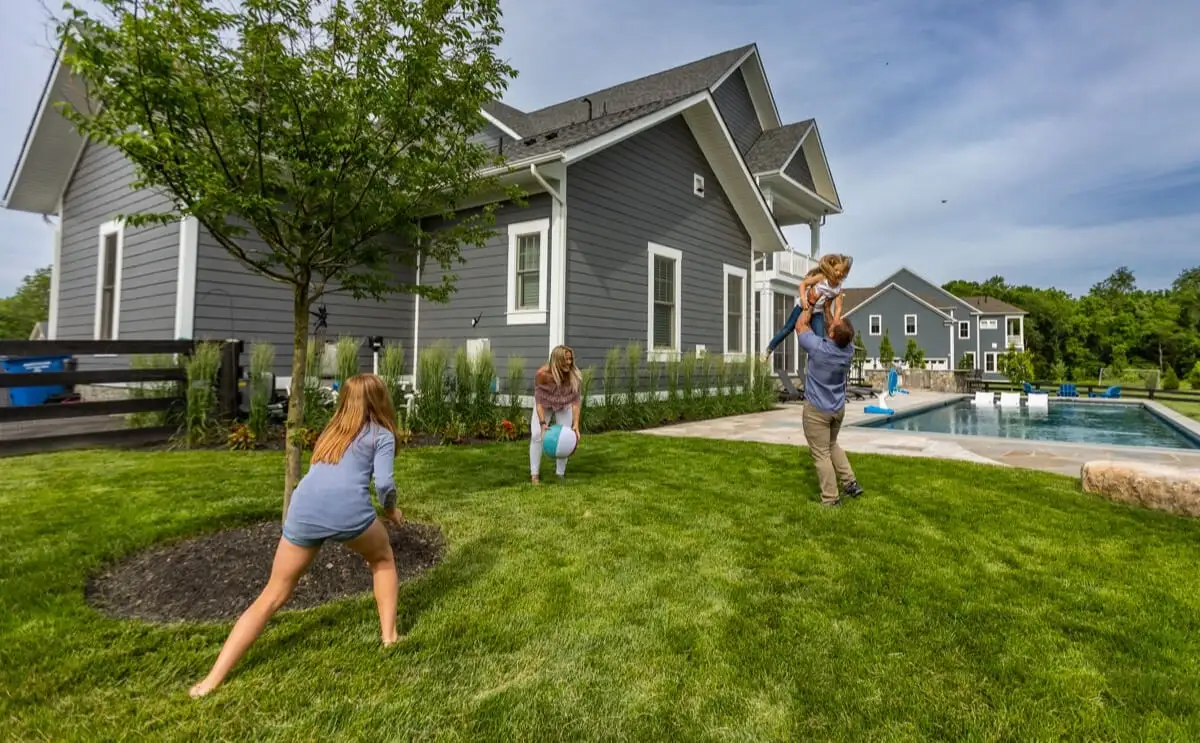
Even though people and shade are a great combination, shade and grass just don’t mix. But there are some things you can do to help improve your results in these more challenging areas.
Here are some essential tips to understanding how to grow grass in shade.
1. Know What Grass Requires to Grow
The first thing you need to understand to get grass to grow in the shade is to know the key things your lawn needs for optimum health and strength. You might find you have an area that just isn't conducive to growing grass at all because it’s missing a key element for good growth. After all, you don’t want to have unrealistic expectations when it comes to your lawn’s performance.
First of all, every type of grass – even shade mixes – requires some sunlight. You can’t expect to buy a bag of shade-specific seed mix and think that it doesn’t need any sun. All grass needs at least 4 hours of sunlight to grow.
2. Know Your Shade Grass Seed Mixes
There are shade grass seed mixes that exist that are more tolerant of the shade than sun varieties like turf type tall fescue that we use in Northern Virginia.
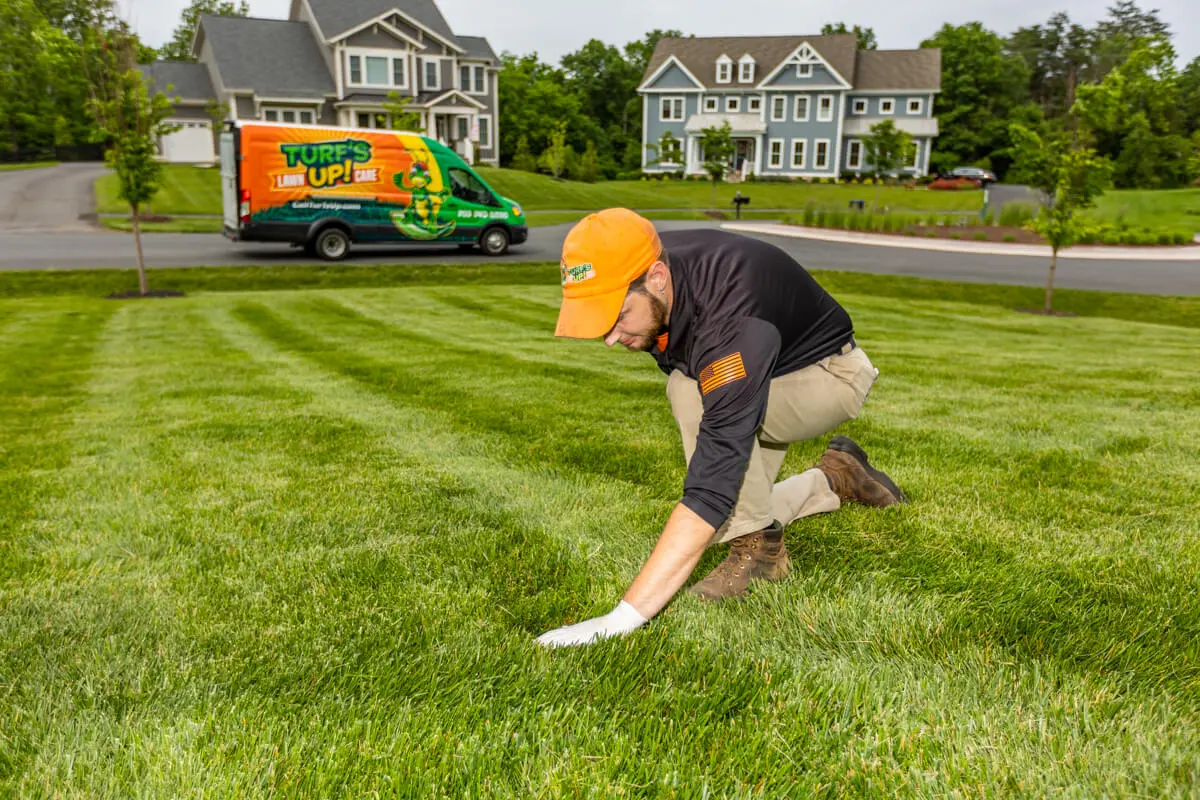
Fine fescues are grass mixes we use that perform best in shade areas. The fescues included are usually chewing fescue, red fescue, and creeping fescue. You have a better chance of growing grass in shaded areas with these types of turf seeds.
3. Proper Fertilization and Weed Control Can Help Make Grass Grow in Shade
Getting grass to grow in the shade also requires careful and cautious maintenance.
For instance, if you over-fertilize and over-treat your lawn with herbicides, you can easily overstress grass growing in a shady spot.
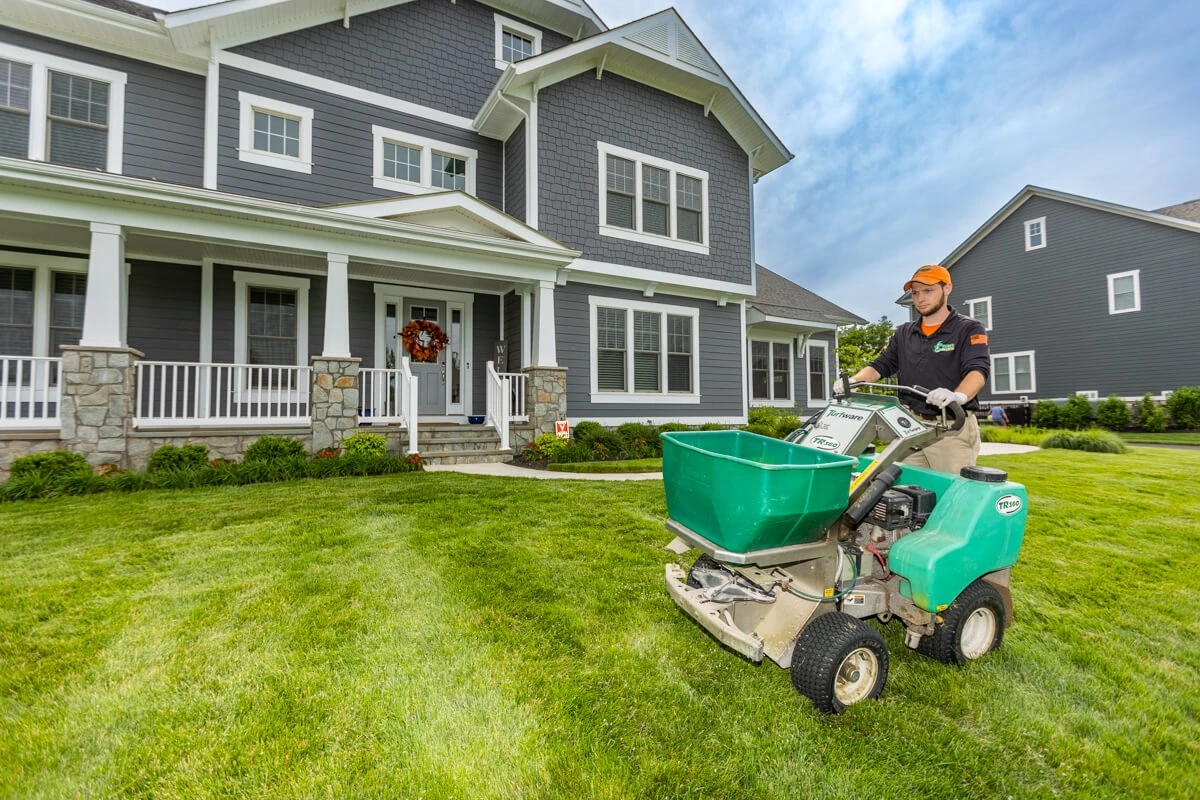
Spot treating shaded grass with fertilizers, herbicides, insecticides, and other products can take care of your issues and keep your lawn from excess suffering.
4. Encourage More Sunlight
One way to help make grass grow in shade is to get more sunlight to it. Trees are covering up that sun and stealing nutrition and water from your grass.
The best way to let more light in is with some tree pruning. Trimming your tree canopy can help thin out your tree to allow some sunlight to filter through to your lawn.
Even with this strategy, pruning may not allow a tremendous amount of sunlight in and your lawn may still be fairly thin in these shady zones.
5. Aerate, Overseed & Topdress Your Lawn
For areas that aren’t in deep shade but maybe more in moderate shade, a thick, green lawn may be possible. It just might require some additional care.
Aeration, overseeding, and topdressing can be essential to ensure your grass, which can become stressed without some sunlight, doesn’t thin out. These services can be key parts of how to grow grass in shade.
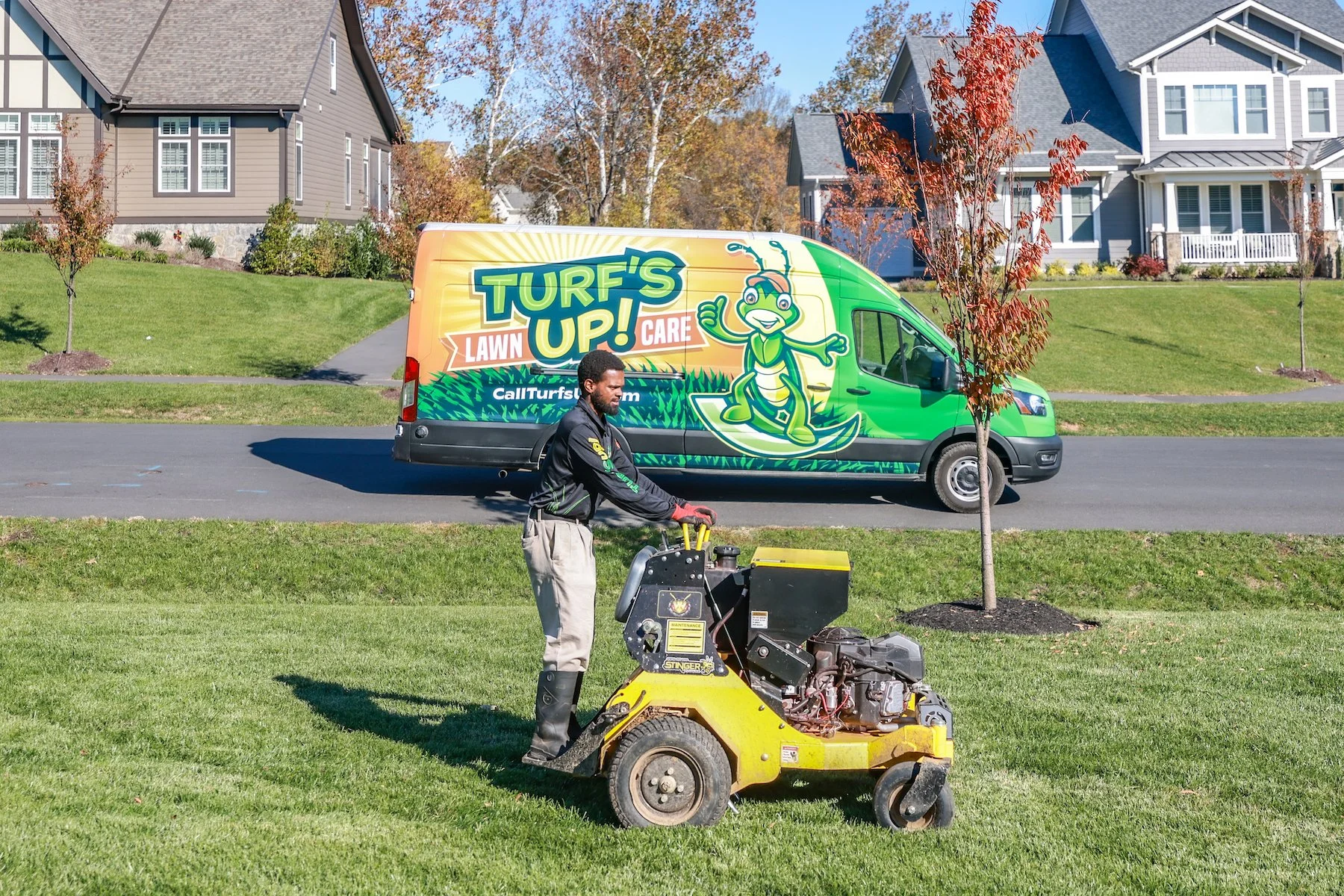
Aeration breaks up the soil, allowing for better oxygen, nutrient, and water infiltration. It also reduces compaction. During topdressing, Turf’s Up experts spread a thin layer of organic matter (about ¼ inch thick) on top of your lawn to amend the soil. This can be done across your entire yard, particularly focusing on bare spots. Finally, overseeding with a fine fescue blend at this time can increase seed to soil contact, boosting germination of the lawn seed and thickening your grass.
Performing these services annually can help you grow better grass in shaded areas.
6. Opt for Alternative Options for Your Shaded Areas
If you have challenges growing grass in shaded areas beneath trees, no matter how much you’ve tried trimming lower branches or other lawn care strategies, maybe it’s time to try an alternative to grass.
A mulch bed is a great option for areas located directly under trees. This stops trees and turf from competing for nutrients and water, as well as protects the roots under that tree canopy from getting hit by mower blades.
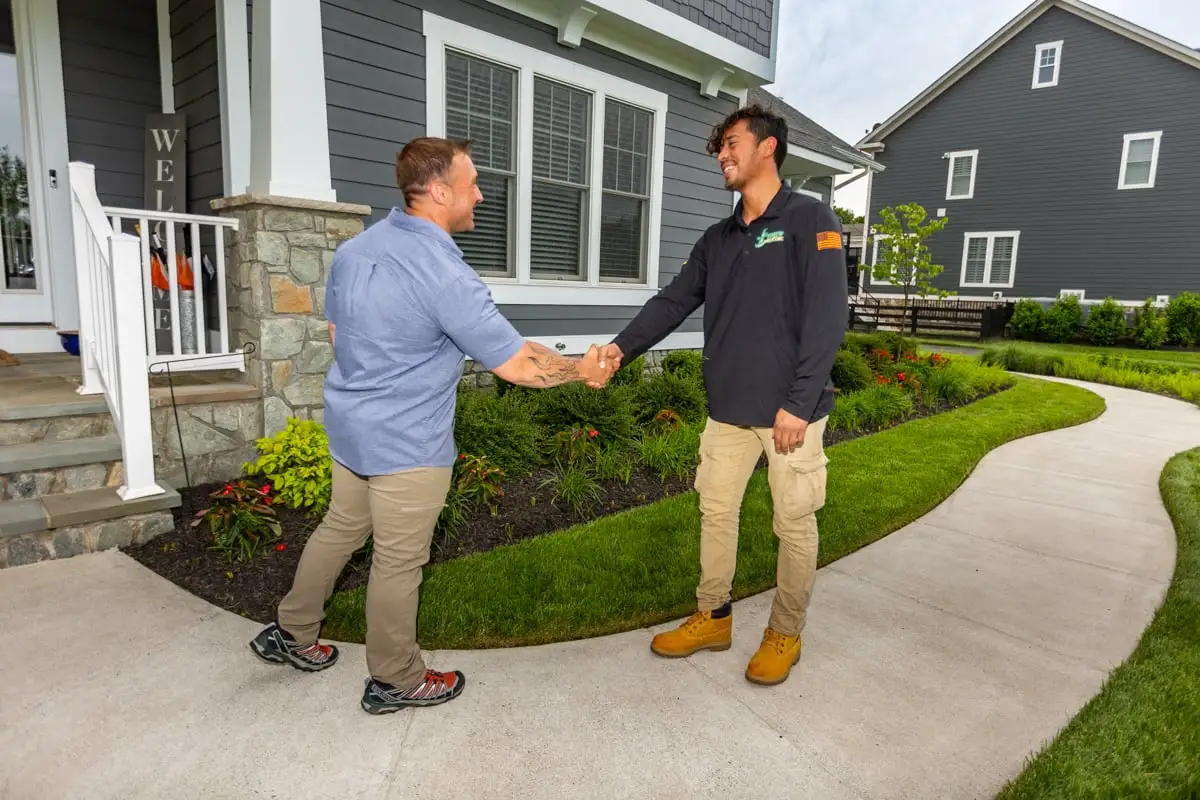
Gravel, rock beds, or other hardscape options can also be great choices for areas where grass won’t grow. A bench or seating area, for instance, can be a nice, attractive and useful addition.
If you would prefer something green that will thrive in shade, you can try groundcovers like vinca and pachysandra. They can be nice low-growing alternatives to grass. You could even opt for plant beds in these locations where you can install shade-loving perennials for additional color and texture.
All of these options can look just as lovely as a lawn so you can still enjoy your shaded spots.
Grow Grass Anywhere With The Help Of Turf’s Up in Northern Virginia
You want a great, green, thick lawn. And you want your grass to thrive in your sunny spots, as well as your shady ones.
We understand that desire. A lush, emerald lawn is what we all long for on our Northern Virginia properties. Making grass grow in shade may be a challenge, but it doesn’t have to be impossible to have a nice looking shady section. Just because you have some great trees or your landscape is bordered by woods, doesn't mean your shady spots have to suffer. The last things you want are bare areas, weeds, patchy turf, and mud. We hope these tips help you with your toughest shade zones.
Frustrated that you’ve tried some strategies to fix your lawn in your less-than-sunny locations, but they aren’t working out as well as you’d hoped?
If you can’t quite figure out how to grow grass in shady areas, give Turf’s Up a call. We know Northern Virginia lawns, and with one look we can tell you what your lawn needs to thrive and provide you with some tips and tricks to get that picture perfect lawn you crave. Your biggest worry after that will be just sitting out back and enjoying the shade.
Ready to learn why Turf’s Up could be your totally awesome choice for lawn care services in Northern Virginia? We’re stoked to learn more about you and help you have the best lawn on the block. Let’s solve your shade challenges together! Get started today with a free quote. Together, we can prepare a customized plan that is perfect for you and your lawn.

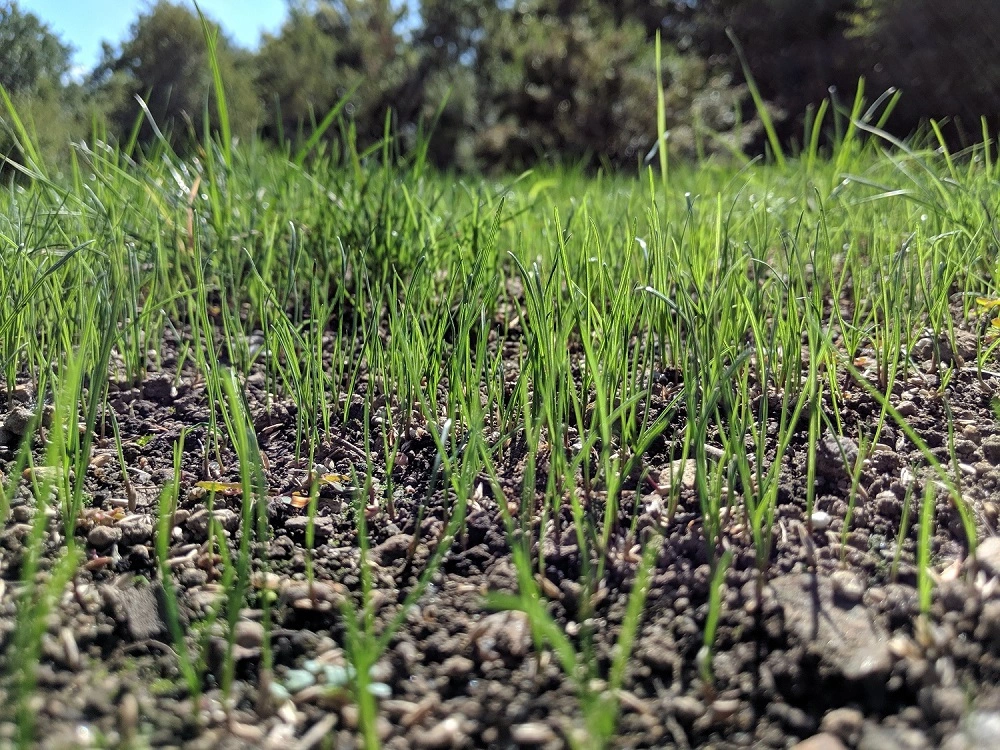



Comments (0)
Thanks for your comment!
Thanks for your feedback! Your comments have been successfully submitted! Please note, all comments require admin approval prior to display.
Error submitting comment!
There is a problem with your comment, please see below and try again.